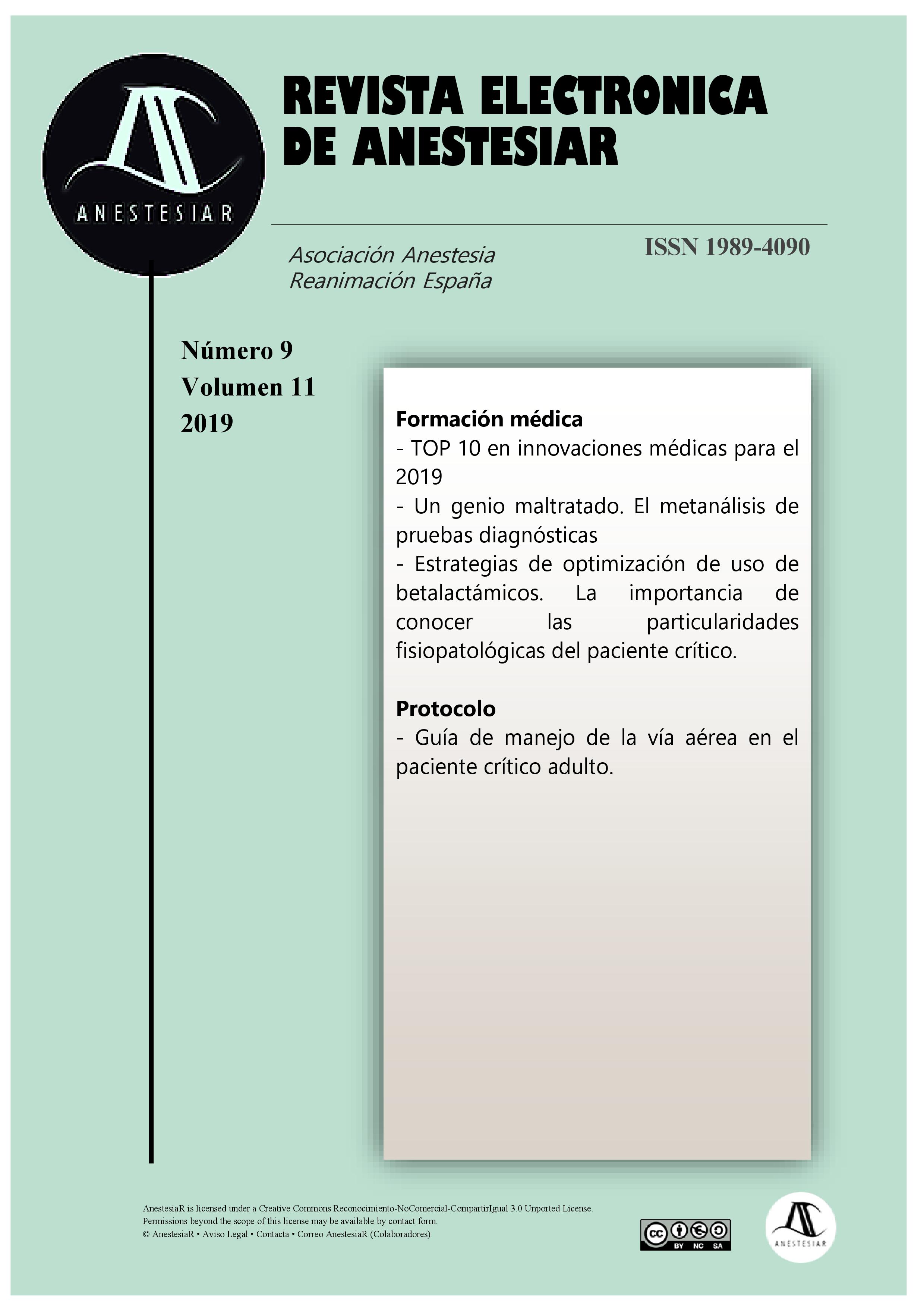Optimization strategies for the use of beta -lactams.
The importance of the pathophysiological peculiarities in the critically ill patient.
DOI:
https://doi.org/10.30445/rear.v11i9.786Keywords:
pharmacodynamics, pharmacokinetics, sepsis or septic shock, antibiotics, Critical care or intensive careAbstract
There are several strategies aimed at improving the use of antibiotics in critical patients. These strategies include de-escalation, cycling, early treatment or the use of pharmacokinetic / pharmacodynamic parameters to adjust the dosage. The pathophysiological changes that occur in the critical patient can condition the pharmacokinetics and pharmacodynamics paramethers of antibiotics, especially in beta-lactams. Therefore, anticipating the antimicrobial result based on their plasma concentrations in the place of action can be very difficult to establish, which, in turn, may have clinically relevant consequences. The pharmacodynamic profile of beta-lactams can be improved, through longer exposure with more frequent doses or with continuous or extended infusions, especially to treat multiresistant bacteria.
References
- McKinnon PS, Paladino JA, Schentag JJ. Evaluation of area under the inhibitory curve (AUIC) and time above the minimum inhibitory concentration (T>MIC) as predictors of outcome for cefepime and ceftazidime in serious bacterial infections. Int J Antimicrob Agents. 2008 Apr;31(4):345-51.
- Udy AA, Varghese JM, Altukroni M, Briscoe S, McWhinney BC, Ungerer JP, Lipman J, Roberts JA. Subtherapeutic initial b-lactam concentrations in select critically ill patients. Association between augmented renal clearance and low trough drug concentrations. Chest. 2012; 142:30–9.
- Abdul-Aziz MH, Lipman J, Akova M, Bassetti M, De Waele JJ, Dimopoulos G, Dulhunty J, Kaukonen K-M, Koulenti D, Martin C, Montravers P, Rello J, Rhodes A, Starr T, Wallis SC, Roberts JA, on behalf of the DALI Study Group. Is prolonged infusion of piperacillin/tazobactam and meropenem in critically ill patients associated with improved pharmacokinetic/ pharmacodynamic and patient outcomes? An observation from the Defining Antibiotic Levels in Intensive care unit patients (DALI) cohort. J Antimicrob Chemother. 2016; 71: 196–207.
- Pea F, Viale P, FurlanutM. Antimicrobial therapy in critically ill patients. A review of pathophysiological conditions responsible for altered disposition and pharmacokinetic variability. Clin Pharmacokinet. 2005; 44:1009–34.
Downloads
Published
How to Cite
Issue
Section
License
Copyright (c) 2019 Revista Electrónica AnestesiaR

This work is licensed under a Creative Commons Attribution-ShareAlike 4.0 International License.
 Envío y derechos de autor
Envío y derechos de autor


 Revista Electrónica AnestesiaR by
Revista Electrónica AnestesiaR by 